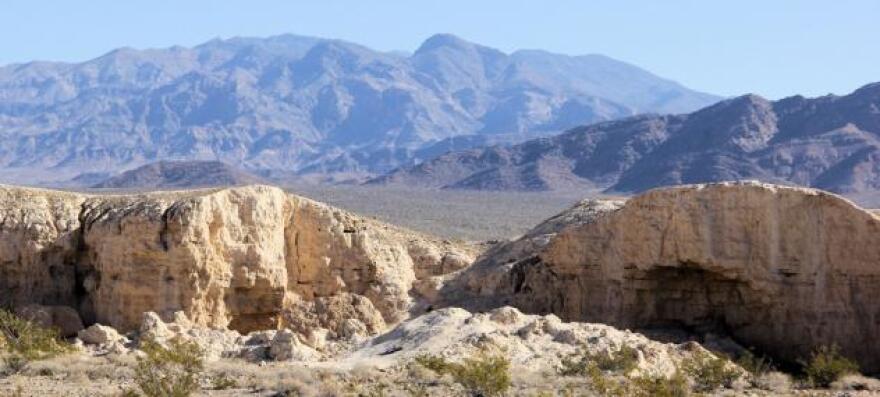For almost a decade, a volunteer group called the Protectors of Tule Springs petitioned, advocated and vouched for a swath of desert north of Las Vegas home to thousands of Ice Age fossils.
Their hard work paid off in December 2014 when President Barack Obama signed into law a massive package of legislation that designated the 23,000-acre tract a national monument.
Today, the Tule Springs Fossil Beds National Monument is in its infancy when it comes to fulfilling the vision of a visitor’s center and fossil trails for residents and visitors to enjoy. Which is why the National Park Service sent its top man for the first director’s position.
Vincent Santucci, senior geologist and paleontologist for the National Park Service is currently the interim director of Tule Springs, here from Washington, D.C. on a 90-day stint.
Overseeing the transfer of the land from the U.S. Bureau of Land Management to the park service, Santucci will begin the a comprehensive management plan for the monument.
Among the top priorities are also to get the area cleaned up – which is why the monument hosted one of its first public events in the form of a trash cleanup on April 12.
When asked about a possible opening date of a visitors center, Santucci said that a lot of other pieces must fall into place first, one of them being funding.
“That’s something we have to consider,” Santucci said. “We have to evaluate what’s in the best interest of our resources and what’s in the best interest to the public.”
Existing development that has caused controversy in the past, such as NV Energy power lines running along the monument’s boundaries, have to be considered when developing the best possible location for the visitor’s center. One hope Santucci has is that Tule Springs will be one of the most handicap accessible units of the National Park Service.
“We want to move forward on that dream and make it real,” Santucci said.
Tule Springs is the first national park specifically established to preserve Ice Age fossils. About 10,000 of the fossils from the area are currently housed in the San Bernardino County Museum in California. For more information about fossils in the national park network, visit the website at www.nature.nps.gov.
Vincent Santucci, senior geologist and paleontologist, National Park Service, interim director, Tule Springs Fossil Beds National Monument








